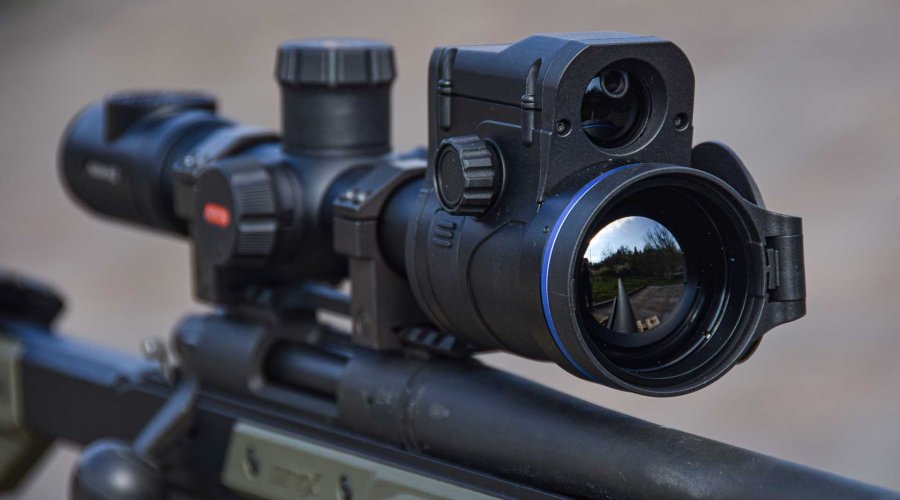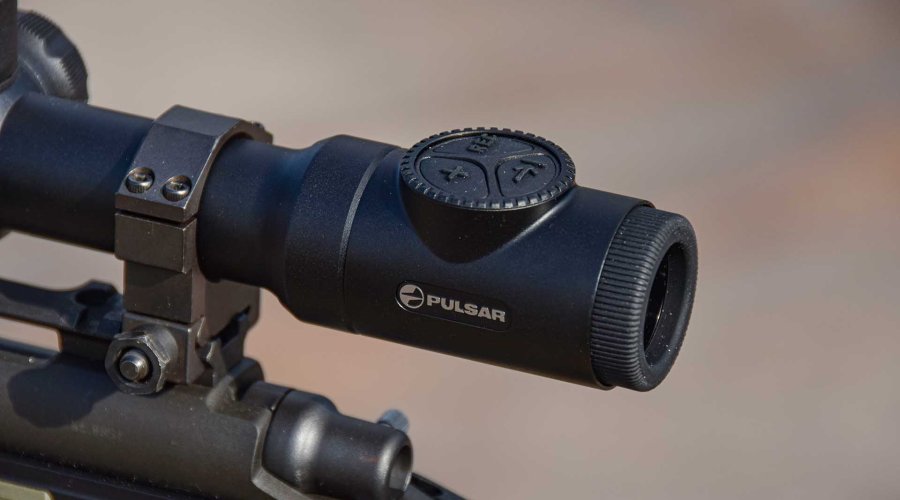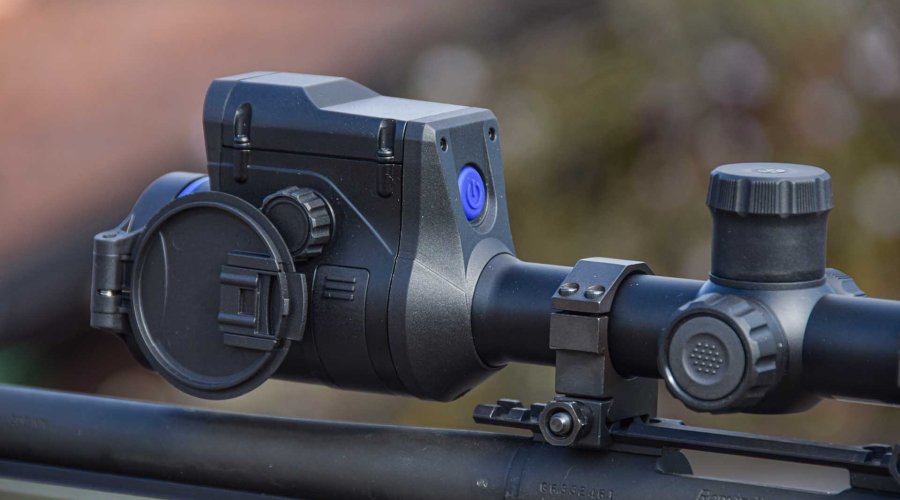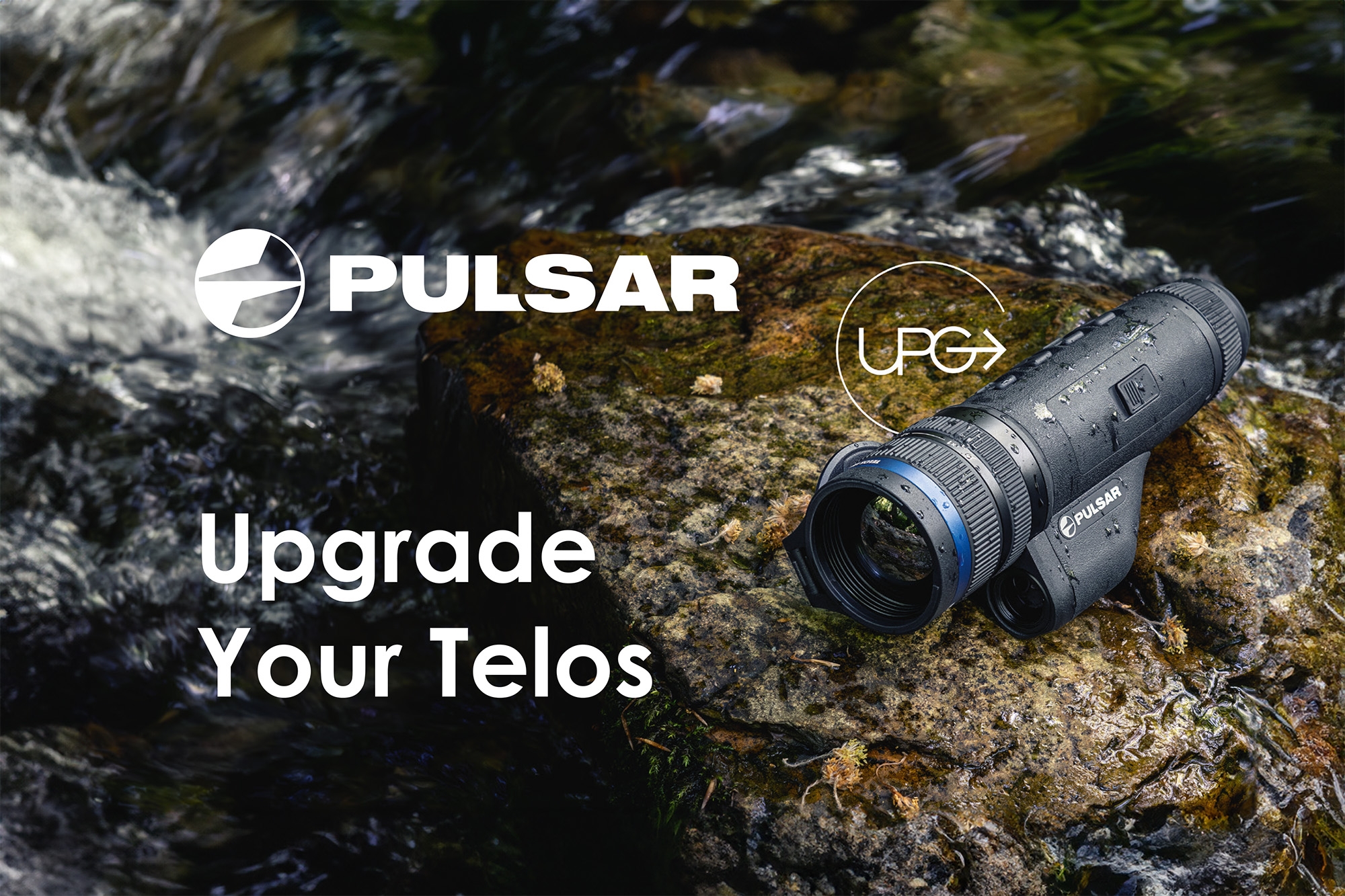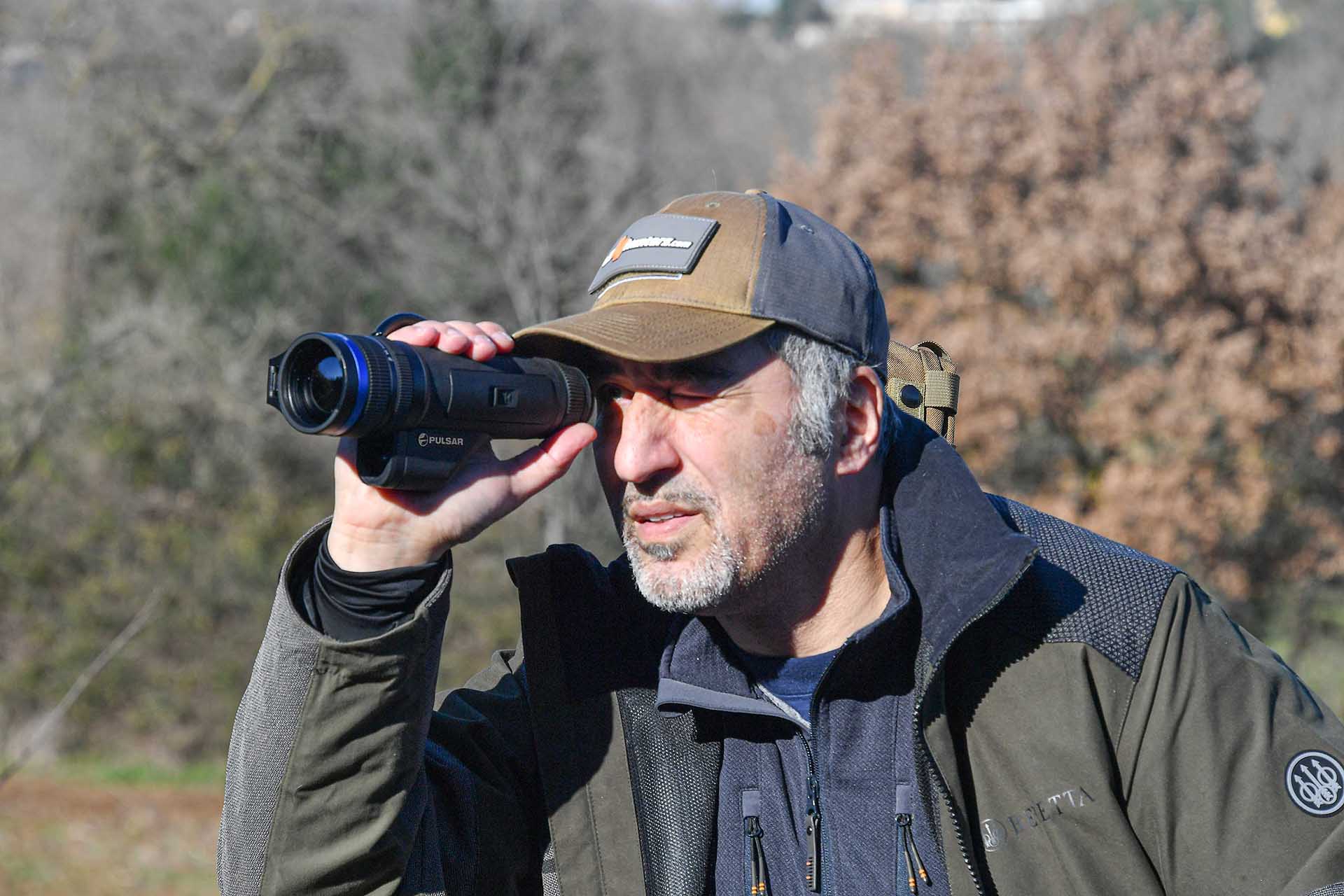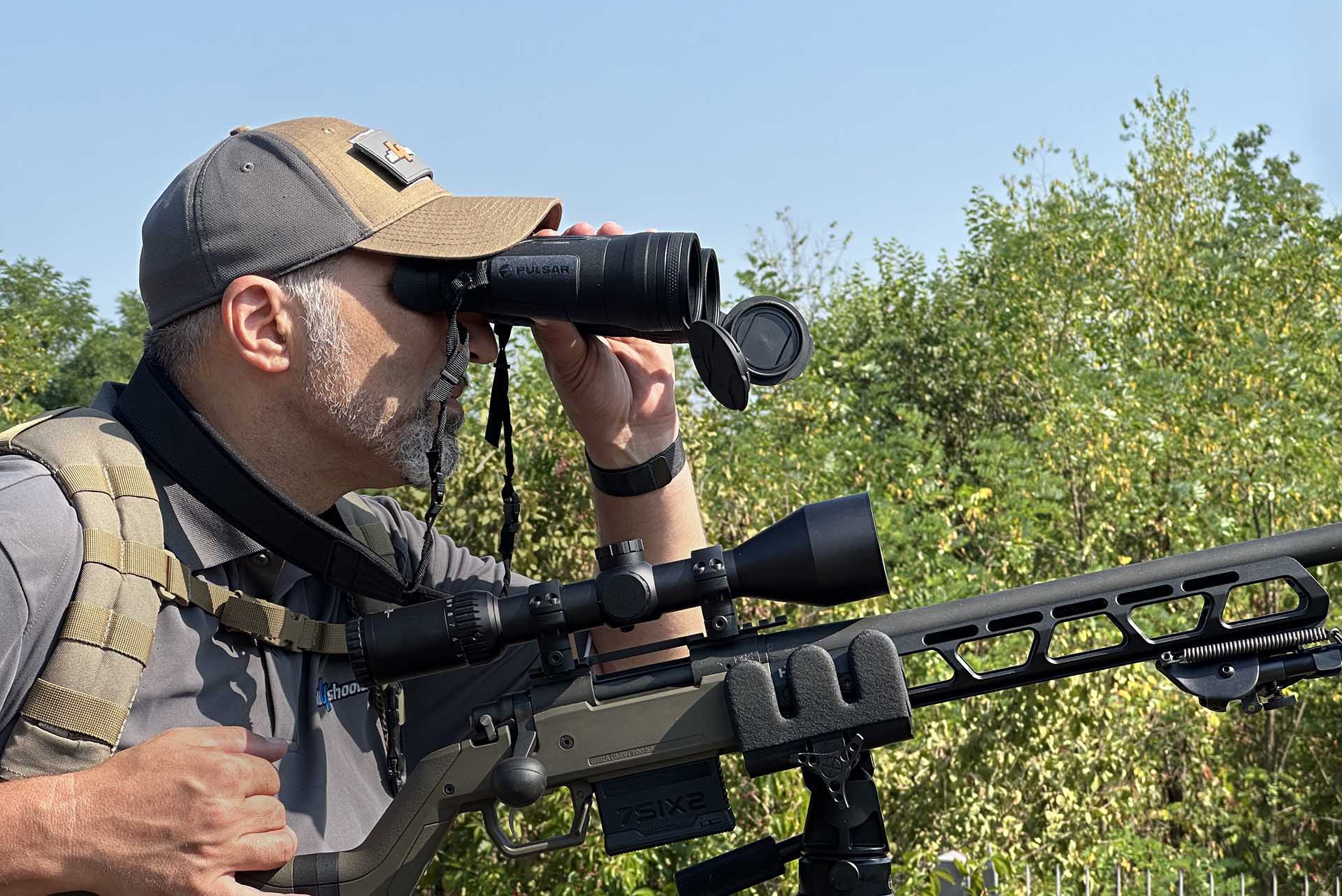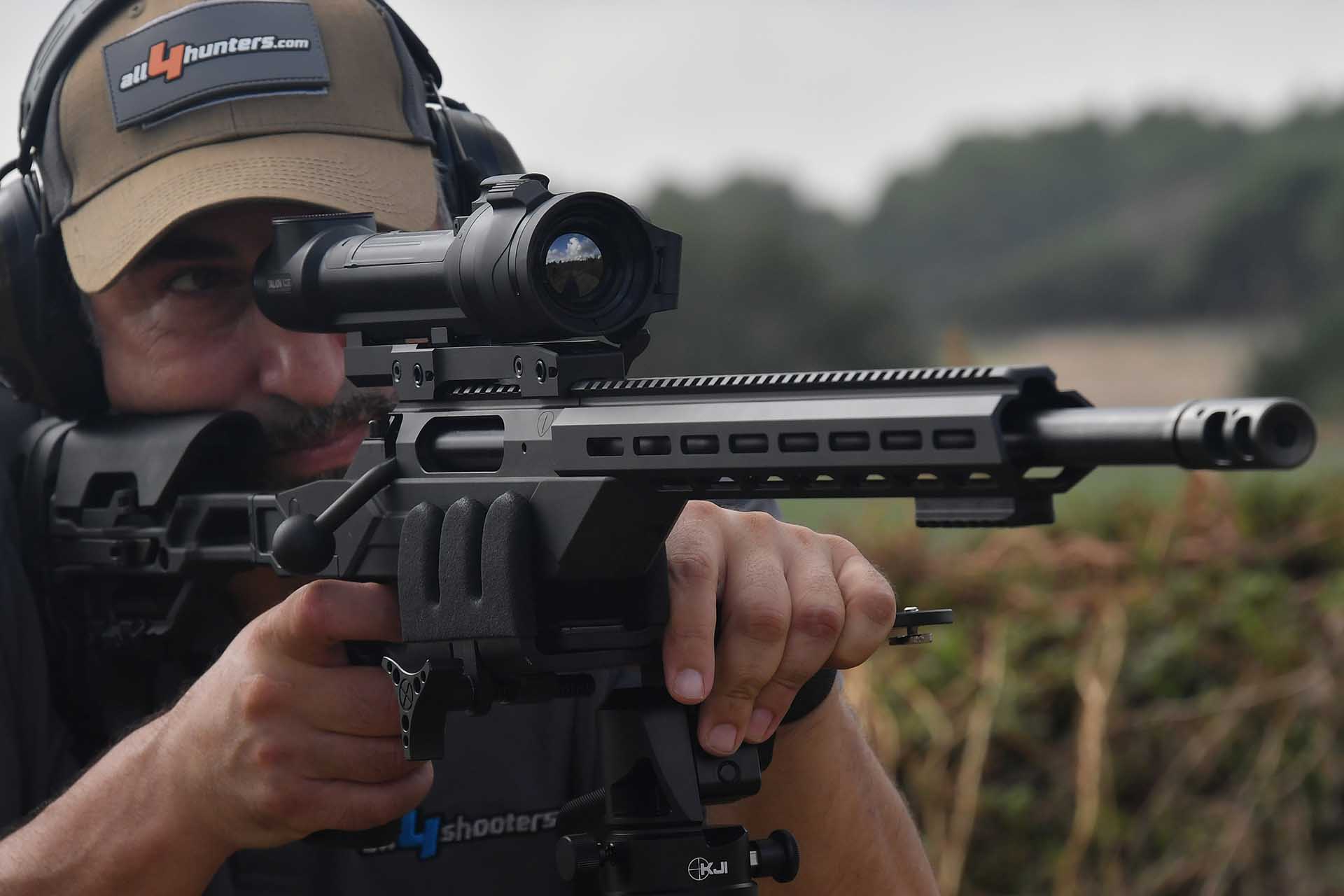Measuring the distance between the hunter and game in the field can be very important. I am of course talking about those hunts with a glass-equipped rifle in which game is difficult to approach or where difficult environmental conditions make it necessary to take a shot at medium to long distances, such as selective hunting or across a valley, for example. Current trends see an increasing interest in hunting with firearms that allow precision shots at longer distances, but which also require accurate calculation of the ballistics: hence, the need for a laser rangefinder.
Pulsar has therefore recently introduced to the market the laser rangefinder-equipped version of its flagship thermal imaging hunting scope, the Thermion 2 XP50 PRO.
Video: Test Pulsar Thermion 2 LRF XP50 PRO
Pulsar Thermion 2LRF XP50 PRO – Features
This scope, like all optics in the established Thermion line, packs a thermal imaging optical system with state-of-the-art performance and resolution engine into a product with the look and feel of a classic, traditional daytime scope, including the standard tube mounting interface for 30 mm diameter rings; but in the 2 PRO version, performance is pushed to new reference setting levels.

The thermal sensing range – specified 1800 m for a 1x1 m heated object – can go up to 2,300 m under certain conditions, thanks in part to the 50 mm focal length lens with F/1.0 (an outstanding thermal energy transmissivity value), built entirely with fully coated and treated Germanium optical elements, which allows a 2X native magnification, that can go up to 16x with digital zoom. The amorphous silicon FPA sensor has a resolution of 640x480 pixels with a 17 µm pitch and an exceptional NETD of only <25mK – this value indicates sensitivity, and the smaller it is, the better the performance, especially in severe atmospheric conditions, and in situations where thermal contrast is low. The graphics and video processing engine includes image enhancement algorithms such as Image Detail Boost to improve image detail and sharpness, user selectable choice of different color palettes for image display, and enhanced situation-specific display modes.
The Thermion 2 PRO's turrets are faux: the elevation turret houses the removable proprietary APS Li-Ion secondary battery (the primary 4.9 Ah battery is built-in), while the windage turret covers the USB connector and microphone; the third turret is instead a rotary selector knob with confirmation button for changing scope functions. The internal menu is controlled not only by the selector but also with a small control panel with three buttons placed on top of the eyepiece. Zeroing is done entirely via software, with several options, introduced since the first Thermion; the click value of this model is 21mm.
All other features of the Thermion 2 XP50 PRO are shared by the other models, such as the built-in photo and video recorder with 16 Gb of internal memory and Wi-Fi connection for smartdevices with the Stream Vision 2 mobile App. All features of the Thermion 2 and Thermion 2 PRO have been detailed in the introductory articles of these models.
Where the LRF version of the Thermion 2 XP50 PRO differs is, of course, the rather obvious presence of the laser rangefinder built into a housing that projects above the objective bell; the rangefinder is capable of measuring up to 800 meters using a single-channel LRF module. The rangefinder optics are separate from the main objective because Germanium lenses are opaque to the wavelengths of the laser beam, unlike other visible-light optics in which the laser shares their objective. Despite its size, the structure that houses the rangefinder is about as tall as the faux elevation turret, and in practical use does not disturb the hunter in both situational awareness and firearms handling. Behind the rangefinder housing is the optic’s general power button, and at its sides, the two (linked) focus knobs.
The Picture- in-Picture (PiP) function is used by the user interface for measuring, the reticle becomes a square, and in the PiP window a magnified view is shown for increased accuracy in measurement; in the field, the rangefinder measures with excellent reliability distances around 500 m on trees and low reflective animals, proving very efficient for hunting purposes.
For testing, I mounted the Thermion 2 LRF XP50 PRO on a Remington 700 bolt action rifle chambered in .308 Winchester, fitted in a high-performance one-piece integrated aluminum ORYX Sportsman chassis and buttstock kit.
This is a rifle set up for long range precision shooting, and thanks to the features offered by Pulsar's flagship riflescope, it lends itself perfectly to the type of stalking and stationary selection hunting with the gun on a bipod and shooting distances ranging from 70-80 m up to 2-300 m and beyond, where the features of the thermal scope with integrated laser rangefinder can be used to the fullest.
Thermion 2 LRF XP50 PRO specs and price
| Manufacturer: | Pulsar - (www.pulsar-nv.com) |
| Sensor
resolution: | 640x480
pixels |
| Thermal
sensitivity (NETD): | <25
mK |
| Lens
focal length: | 50 mm
F/1.0 |
| Magnification: | 2-16x
with digital zoom |
| Horizontal
field of view: | 12.4° |
| Click
value (1 click at 100m): | 21 mm |
| Detection
range: | 1,800 m |
| Laser
rangefinder: | Single-channel LRF, measures up to 800 m |
| Dimensions: | 412x78x83mm |
| Weight: | 900 g |
| Display: | AMOLED,
1024x768 pixels |
| Batteries: | Built-in
4.9Ah, replaceable 2Ah APS type |
| Operation
time: | About 7 hours, 10 hours total (both batteries charged) |
| MSRP: | 5,500
Euro, price can vary across EU due to local taxes |
Notes: | Video and photo recorder with 16 GB internal memory, Wi-Fi mobile Stream Vision 2 app support, IPX7 waterproof protection level, 50 hz "full frame rate" sensor and display |
Pulsar Thermion 2LRF XP50 PRO field test
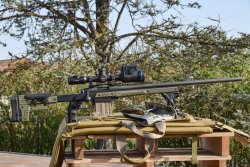
I have tested the Thermion 2 LRF XP50 PRO at the range taking advantage of the one-shot zeroing feature by confirming and refining the zero at 100 m with RWS hunting ammunition loaded with 165-grain lead-free HIT bullet, with excellent results up to the range’s highest distance, 300 m; the scope offers several standard reticle patterns in separate zeroing profiles, and selectable scalable reticles (which basically replicate the operation of a reticle on the first focal plane).
The scalable M57Fi reticle I used features 1mil subtensions, basically 10 cm at 100 m; at 300m the point of impact is 46 cm below the cross hairs and thus about halfway through the second subtension below crosshair (about 1.5 mil). I can feel a lack of finer subdivisions in the available scalable reticles, but for hunting use and at the maximum distances used it is sufficient.
One feature we would like to see implemented in the software (and who knows…) is the automatic calculation of the ballistic drop on the reticle based on the distance measured, according to the ballistic profile of the ammunition used.
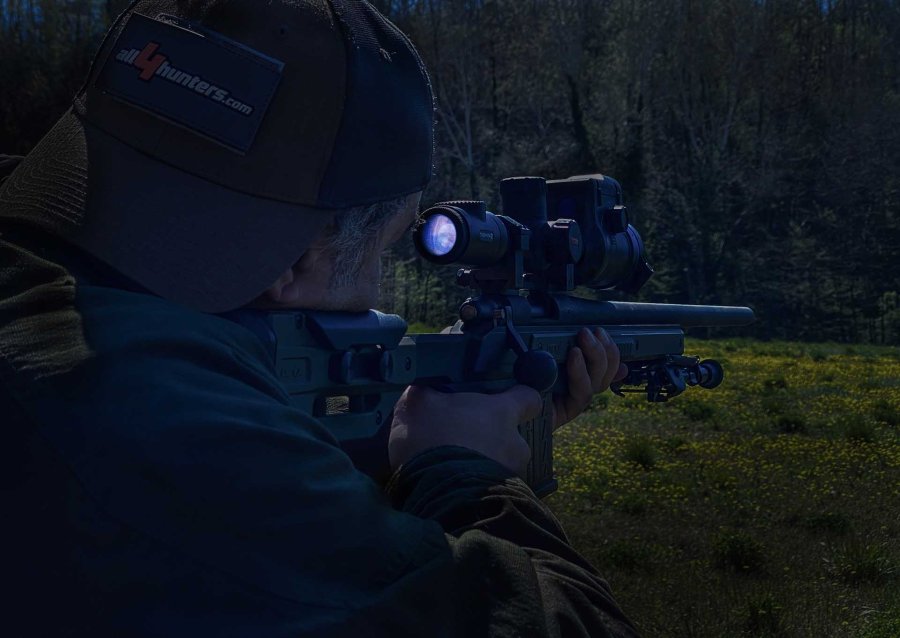
The image is excellent even using the digital zoom, at 4x the definition is essentially comparable to the native resolution of the XQ model, equipped with a 384-pixel sensor, and is absolutely useable up to 8x; the image becomes excessively grainy at 16x, still allowing excellent shot placement on the game. The higher sensitivity of the sensor translates into greater dynamic range and the ability to better distinguish small temperature differences on the animal and surrounding objects.
Focusing is most convenient, with the gun resting on a bipod or rucksack you use your weak hand with the knob on the left; with the gun shouldered, your strong hand while holding the gun with your left hand on the forend. Controls are intuitive and the menu logic is always the same across all generations of Pulsar thermal optics. Using a new Pulsar device is like switching from one generation of an iphone to another... Eye relief, exit pupil diameter and eyebox are comparable to those of a traditional, high quality riflescope.
In conclusion, Pulsar's Thermion 2 LRF XP50 PRO thermal riflescope’s performance in practical use convinces in many respects, and it certainly represents the gold standard in the field of thermal optics for hunting. The MSRP in EU is below 5,500 euros, with some differences in individual countries due to taxes; a price that only highlights its exclusivity and positioning in the niche top-tier in the market for performance and quality.
For more information please visit www.pulsar-nv.com





